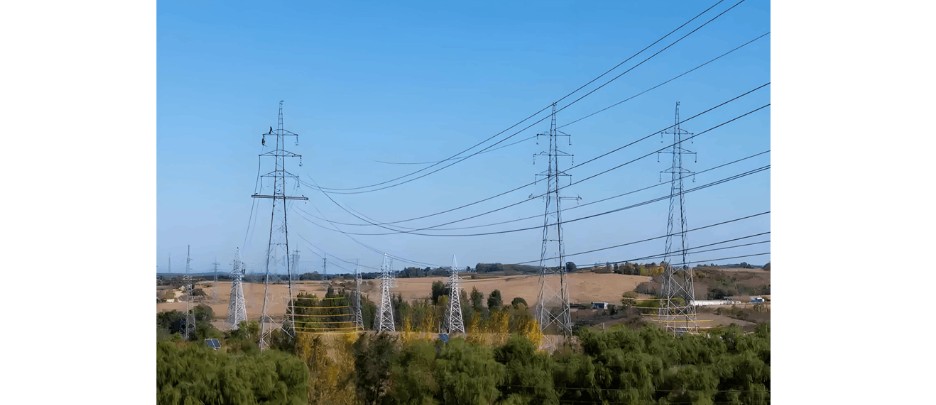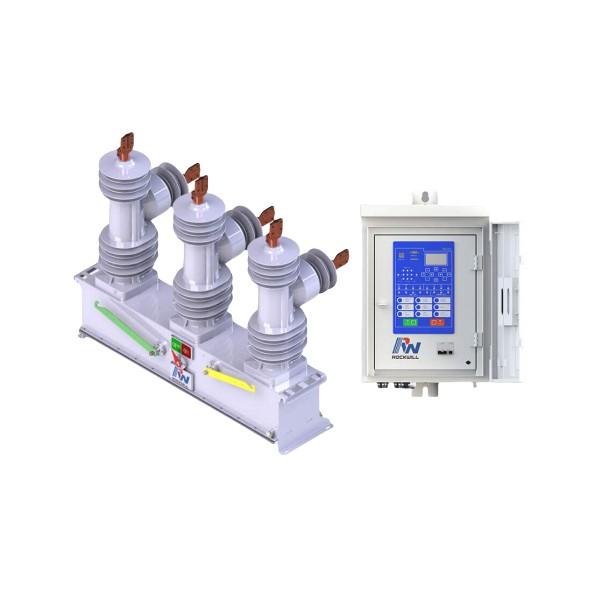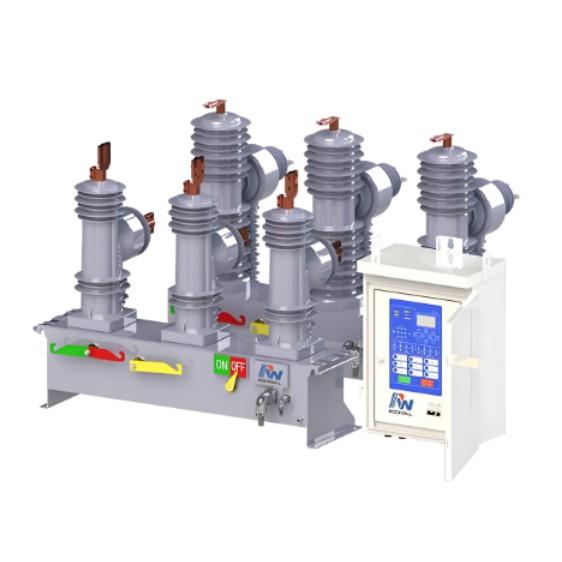1 Pahayag sa Paglipad ug Pagdistribute sa Kuryente
1.1 Pinaka Importante nga Katangian sa Paglipad ug Pagdistribute sa Kuryente
Kasulobon sa Pagpanalipod: Kini nagresulta gikan sa maluwas na lugar nga gi-cover sa mga linya sa paglipad ug pagdistribute sa kuryente, ang kasuko nga terreno sa lugar sa pagtukod, ug ang epekto sa pagbag-o sa panahon sa bawng panahon, tanan nining mga faktor mao ang nagpakasulobon sa pagpanalipod.
Nakapilde nga Kinahanglan alang sa Operational Reliability: Ang reliable nga operasyon sa mga linya sa paglipad ug pagdistribute sa kuryente estrechamente related sa pag-uswag sa industriya ug agrikultura. Aron mapasabot ang panginahanglan sa tanang sektor sa lipunan, ang mga kompanya sa power grid naghatag og mas pildi nga kinahanglan sa pagpamahay sa ilang operational reliability, kini nagdetermina sa ilang katangian nga may napilde nga operational reliability.
Prominent nga Safety Hazards: Parihapon, ang maluwas nga coverage sa mga linya nagresulta sa potensyal nga hazards gikan sa iba't ibang environmental influences, resulta niini ang katangian nga prominent nga safety hazards.
1.2 Kasagaran nga Mga Klase sa Fault sa Power Transmission ug Distribution Lines
External Force-Related Faults: Kasagaran, ang external force ang pinaka common ug major cause sa faults. Ang data nagpakita nga ang damage sa mga linya sa paglipad ug pagdistribute sa kuryente gikan sa external forces adunay kaugalingong bahin sa tanang damage factors.
Human-Related Faults: Sa daghang kaso, ang human-related faults gikan sa operational errors, kini usab usa ka importante nga factor nga nagresulta sa damage sa mga linya sa paglipad ug pagdistribute sa kuryente.
Equipment-Related Faults: Ang pipila ka equipment mahimong magpadayon og faults o damage human sa period of use tungod sa quality o performance issues.
2 Napaka Importanteng Mga Isyu nga Nakakaapekto sa Safe Operation sa Power Transmission ug Distribution Lines
2.1 External Damage Factors
Sumala sa relevant statistics, ang damage sa mga linya sa paglipad ug pagdistribute sa kuryente sa power grid gikan sa external damage nag-increase year by year, mainly manifested in the following aspects:
Ang blasting operations para sa mountain development sa mga lugar sa bukid nagdamage sa line insulators o even cut off the lines.
Ang flames ug thick smoke gikan sa open-air burning sa mga rural areas nagdamage sa insulation layer sa mga linya, causing line tripping.
2.2 Unreasonable Line Network Structure
Sa sunod-sunod nga pag-abot sa construction sa distribution network ug ang increasing load sa mga linya sa distribution network, ang mga linya dili mahimo nga ma-adjust sa timely ug effective manner. Kini generally reflected in the following:
Ang cross-sectional area sa conductors (especially ang cross-sectional area sa conductors sa starting end sa pipila ka linya) too small, resulting in inability to transmit electricity even when power is available, and even fuse melting of line leads.

Ang pipila ka branch lines connected to more than a dozen distribution transformers, leading to large load capacity. This often causes overloading of the branch lines during operation, resulting in power outages and blackouts.
Ang pipila ka linya too long but lack necessary branches, leading to increased line losses and reduced voltage at the end of the lines, which in turn affects the quality of the power supply voltage.
2.3 Lightning Strike Factors
Thunderstorm weather is common in most regions of China. Under the thermal effect and mechanical force of lightning, power transmission and distribution lines are prone to flashovers, which cause severe damage to the power transmission and distribution line system and affect its normal operation. In addition, the overvoltage generated by lightning strikes is transmitted to the power supply equipment in the power system through the power transmission and distribution lines. Under the action of overvoltage, the normal dielectric strength of the power supply equipment is impaired, and electronic components in some sensitive power supply equipment in the power grid are damaged, undermining the safety and stability of the substation system.
2.4 Aging of Power Transmission and Distribution Lines and Equipment
In China, most equipment in the transmission and distribution network is outdated, which makes the power transmission and distribution lines and equipment unable to effectively meet the requirements for the stable operation of the power grid. This is mainly reflected in the following:
The operating mechanisms of most pole-mounted circuit breakers are unreliable, and the operation methods are relatively backward, making it impossible to implement effective remote operation.
There are low-quality insulated wall bushings in the distribution network, which may break down under the action of various overvoltages, causing permanent line faults.
Some surge arresters of poor quality are used in the transmission and distribution network, which are prone to explosion when subjected to overvoltage, leading to distribution network faults.
3 Difficulties in the Operation and Maintenance of Power Transmission and Distribution Lines
As a complex system, the power system network has made the operation and maintenance of power transmission and distribution lines more complex with the continuous development of smart grid construction. This is because the power transmission and distribution lines cover an extremely wide area, and the geographical environment varies in different regions, which in turn has different impacts on line installation. In many areas, severe climate problems (such as cold winters and hot summers) affect the operation of power transmission and distribution lines.
There are also difficulties in the design, laying, and maintenance of power lines. For example, in relatively remote areas, trees growing near power transmission and distribution lines may pose a threat to line safety; the continuous growth of trees may come into contact with the erected lines, triggering power safety faults. When the temperature rises, the sag of the conductors increases, which may also lead to faults in the power network.
The increasingly developed industry and agriculture have also raised higher requirements for power transmission and distribution. Therefore, ensuring the stability and reliability of power transmission, increasing transmission capacity, and maximizing the improvement of operation quality are also major challenges faced by current power workers.
4 Countermeasures for the Operation and Maintenance of Power Transmission and Distribution Lines
Improve the Safety Early Warning System for Power Transmission and Distribution Lines: Due to China’s topographic and climatic characteristics, there are many difficulties in the maintenance of power transmission and distribution lines. Therefore, it is necessary to establish an early warning system for power transmission and distribution lines based on actual conditions to identify existing problems and take effective solutions.
To address the difficulties in the operation and maintenance of power transmission and distribution lines caused by geographical or climatic factors in China, modern scientific and technological means should be adopted to establish a corresponding early warning system. Real-time monitoring of the conditions in the areas adjacent to the power transmission and distribution lines should be conducted to implement dynamic management.
In addition, local climate information should be continuously collected and organized to ensure that the early warning system is always in real-time monitoring mode. In this way, once an abnormal situation occurs in the lines, an early warning can be issued in a timely manner, facilitating management personnel to take relevant measures after receiving the information and maintaining the stable operation of the power system.
4.1 Strengthen Patrol Inspections Along Power Transmission and Distribution Lines
To ensure the safe operation of power transmission and distribution lines, it is necessary to strengthen inspection and maintenance of the lines. Specific inspection items include:
Checking whether the distance between service drop lines, and the distance between the lines and buildings/ground (for crossing spans) are within the specified range, and whether the lines have aging or corrosion phenomena.
Checking whether the supports of the lines are stable, and whether the supports have damage or rust.
Inspecting the environment around the lines. For example, if there are blasting projects in the vicinity, checking whether the blasting projects have standardized blasting application procedures and whether the blasting safety measures are appropriate.
4.2 Strengthen Fire Prevention for Lines
To ensure the safe operation of power transmission and distribution lines, fire prevention work should be strengthened in practical operations:
Conducting comprehensive cleaning and investigation of potential fire hazards in the corridors of power transmission and distribution lines to reduce the probability of fire, and strengthening the maintenance and management of line operation.
Enhancing communication and management of line information to dynamically and comprehensively grasp the operation status of power transmission and distribution lines, and improving the emergency response plan for mountain fire prevention in practice.
4.3 Strengthen Lightning Protection for Power Transmission and Distribution Lines
Due to the inherent characteristics of power transmission and distribution lines, it is impossible to achieve complete lightning protection. Therefore, to maintain the safe operation of the lines, lightning protection measures should be taken:
Erecting corresponding coupling ground wires.
Reducing the grounding resistance of tower foundations, which is an effective method to improve the lightning resistance of the lines.
Adopting arc suppression coils to prevent lightning strikes.






















